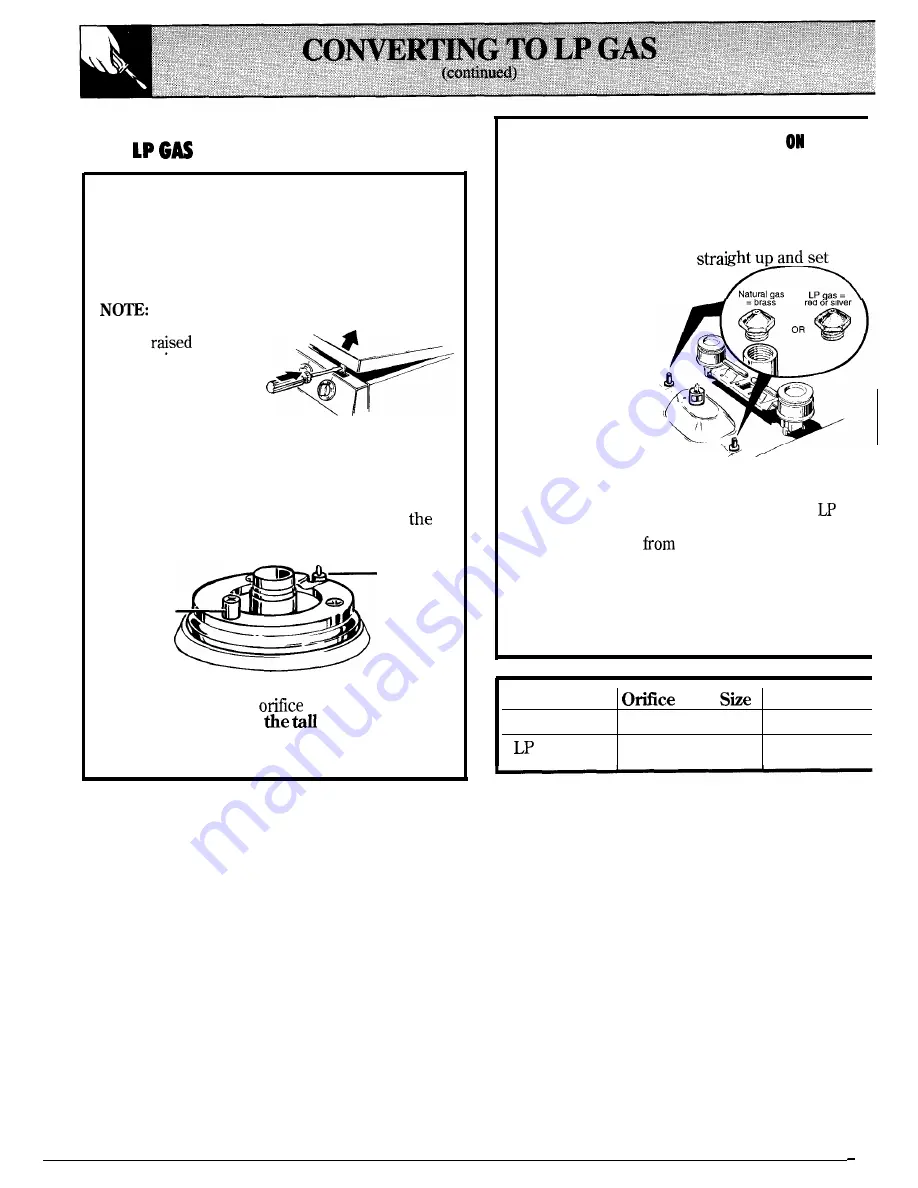
HOW
TO
CONVERT THE RANGE FOR
USE
WITH
OR NATURAL GAS
(continued)
5. To prevent leakage, make sure the orifice
spuds are securely screwed into the gas inlet
tubes. Use a small wrench to hold the inlet tube
hex to prevent it from twisting.
6. Put old orifice spuds back in the bag to save
for possible future conversion.
If an orifice spud is accidentally
dropped, the cooktop
can be
by
“engaging
the 2 front clips
with a large flat
blade screwdriver.
DO NOT attempt to raise the cooktop without
removing all 4 burner bases.
If wires were disconnected to remove the
cooktop, feed wires through the burner holes in
the cooktop. Attach to each burner electrode
terminal carefully, making sure not to bend
terminal. Then lower cooktop until it snaps
over the clips.
Electrode
Tall Screw
7. Carefully insert burner bases straight down
with the tube over the
spud. Replace the
screws, making sure
screw is
opposite the burner electrode in each
burner base.
46
❑
CONVERTING SURFACE BURNERS
MODELS EQUIPPED WITH STANDARD TWIN
BURNERS
(See Step 3 if range is equipped with
sealed burners.)
1. Lift cooktop.
2. Lift burner assemblies
aside to gain
access to surface
burner spuds.
3. With a 5/16”
or a small
adjustable
wrench, remove
each of the four
spuds on the
surface burner
gas inlet tubes
and replace them
with the correct gas spuds mounted in a holder
at the right rear of the range, above the
regulator. Natural gas spuds are brass and
gas spuds are red or silver. (Mount the spuds
that you removed
the inlet tubes back in
the holder.) To prevent leakage, make sure
spuds are securely screwed into gas inlet tubes.
4. Replace the burner assemblies.
5. Keep all spuds with your range so you have
them if you move or get a different gas hook-up.
Top Burner
Drill
Color
Natural Gas
#54 (.0550 Dia.)
Brass
(Propane)
#66 (.0330 Dia.)
Red or Silver
Summary of Contents for JG5P34
Page 52: ...NOTES 52 ...
Page 53: ...NOTES 53 ...









































